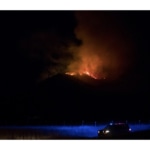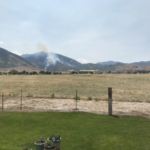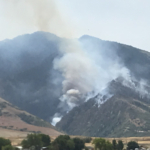Aviation involves a lot of risk management, and Aviation PR is based on the same discipline.
Chances are, at some point in the next few years, something bad is going to happen. It could be something outside of your control like a natural disaster or something due to human error. We are all humans, and we employ humans, and humans make mistakes.
You know the saying – “There are old aviators, and there are bold aviators. But there aren’t many old, bold aviators!”
Those that have taken the time to think through some likely scenarios and how they will respond are the ones that will survive whatever small or large “disaster” it is, and still be around in five or ten years.
In this episode, we talk about a natural disaster currently occurring at our house, and provide our six principles for creating a good “bad news” press release.
Watch Here:
Listen Here:
 There are four ways to get publicity, and we spend most of our time talking about the first three – “good” publicity.
There are four ways to get publicity, and we spend most of our time talking about the first three – “good” publicity.
But, bad things do happen to good people in this industry and we find ourselves helping someone make the best of a bad situation.
Of course, nobody likes to dwell on the negative, especially in this era where positive thinking is so popular.
But our mentor Dan S. Kennedy says – “I’m a believer in the positive power of negative thinking!”
And, our clients who have spent a little bit of time thinking about what could go wrong and what they can and should do about it have a lot more options when something actually DOES go wrong.
You can’t anticipate every circumstance, but most fall into some pretty predictable categories – human error being the most common!
In fact, in a little disaster recovery of our own, the aircraft in the image we used in our slide show was NOT the incident John was speaking of.
The actual story of this Challenger 600, according to the NTSB is this:
On February 2, 2005, about 0718 eastern standard time, a Bombardier Challenger CL-600-1A11, N370V, ran off the departure end of runway 6 at Teterboro Airport (TEB), Teterboro, New Jersey, at a ground speed of about 110 knots; through an airport perimeter fence; across a six-lane highway (where it struck a vehicle); and into a parking lot before impacting a building. The two pilots were seriously injured, as were two occupants in the vehicle. The cabin aide, eight passengers, and one person in the building received minor injuries. The airplane was destroyed by impact forces and postimpact fire. The accident flight was an on-demand passenger charter flight from TEB to Chicago Midway Airport, Chicago, Illinois. The flight was subject to the provisions of 14 Code of Federal Regulations (CFR) Part 135 and operated by Platinum Jet Management, LLC (PJM), Fort Lauderdale, Florida, under the auspices of a charter management agreement with Darby Aviation (Darby), Muscle Shoals, Alabama. Visual meteorological conditions prevailed for the flight, which operated on an instrument flight rules flight plan.
The safety issues addressed in this report include weight and balance procedures; flight crew actions, training, and procedures; company oversight and operational control; FAA responsibility and oversight; cabin aide actions, training, and procedures; and runway safety areas.
Back to our story –
The canyon behind our house is a prominent feature in our Instagram Feed. I love the fact that “our mountains” are different every time we look at them.
But last Thursday night, (July 26, 2018) the landscape changed pretty dramatically as a fire started on the north slope on the west side of the canyon.
The good news is, we have a front-row seat to some amazing aviation as rotary and fixed-wing firefighters struggle with the blaze, which at this writing has consumed 200 acres, going over the top of the mountain and down the other side.
Having a fire in one’s backyard is also very inspirational for us to go over our disaster recovery procedures. In summary:
- All files are backed up off site
- All documents are in fireproof room
- Our business is portable and we can work from anywhere with good Internet.
- The house and all of our equipment is insured.
- We can pack the “mobile office” and be gone in 20 minutes.
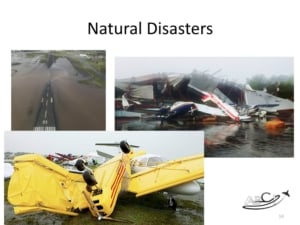 We are very fortunate to have these options.
We are very fortunate to have these options.
Natural Disasters and Events
Aviation is VERY susceptible to natural disasters. Airports get flooded, hurricanes and earthquakes destroy property, and windstorms can wreak havoc on aircraft designed to respond to wind.
Whatever the likely disasters in YOUR area, you can take precautions to protect your property and that of your clients, but you also want to give some thought to how you’re going to communicate that in your marketing materials ahead of time and any PR materials you want to have ready to go quickly in the event you need them.
Human Error
Any Embry-Riddle student worth his or her salt can tell about the incident that started the pervasive use of checklists in aviation to prevent human errors.
On October 30, 1935, Boeing was set to demonstrate the most sophisticated aircraft developed to date, the B-17 “Flying Fortress.” It was planned to be a triumphant and elaborate demonstration of the capabilities of the big bomber at historic Wright Field in Dayton, Ohio.
Unfortunately, the demonstration ended up being spectacular for quite a different reason:
The Model 299 was piloted by Major Ployer P. Hill, U.S. Army Air Corps, and co-piloted by Lieutenant Donald Leander Putt.
Taking no chances, Beoing’s Chief Test Pilot Leslie R. Tower and Beoing mechanic C.W. Benton were also aboard the doomed plane.
Upon take off, the U.S. Army Air Corps and members of the Boeing corporation looked on with excitement and pride for the future of American aviation.
The aircraft sped down the runway, achieved perfect lift, began to climb, and within seconds, stalled, banked, and crashed into the field, as onlookers watched in horror.
Two people were killed onboard, including the pilot, Major Ployer P. Hill. The co-pilot and two others onboard were pulled from the burning wreckage, thus saving their lives.
An investigation found the airplane to be in perfect condition. No mechanical failure could be found that would have resulted in the deadly crash. Upon deeper investigation and eye witness reports, including the surviving co-pilot, it was determined that the flight crew had simply forgot to release the flight control gust locks. Thus causing the plane to nose dive into the ground, immediately after takeoff.
https://hackernoon.com/happy-national-checklist-day-learn-the-history-and-importance-of-october-30-1935-17d556650b89
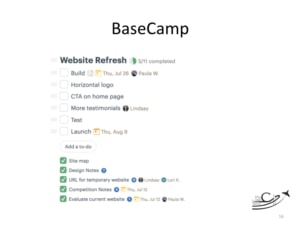 Boeing quickly introduced and mandated the use of checklists, which were adopted by Boeing’s customers, the U.S. Army Air Corps. The checklist became as central to pilot training as the aeronautical concepts of lift and drag.
Boeing quickly introduced and mandated the use of checklists, which were adopted by Boeing’s customers, the U.S. Army Air Corps. The checklist became as central to pilot training as the aeronautical concepts of lift and drag.
And now, we use it in our business, using Basecamp 3, a very checklist-oriented project management tool that significantly reduces (but does not eliminate the possibility of) human error.
In either case, in spite of our best intentions and efforts, sometimes bad things happen.
Our solution?
Bad News Releases & Announcements in Aviation PR
A good “bad news” press release or announcement, made as quickly as possible when you learn of the error. Make the announcement in the most convenient way for the people most affected by the problem or disaster.
- Headline should be concise, unambiguous, and complete, but as “boring” as possible. (This is the opposite of our usual advice for Press Releases!)
- Summarize the incident. Just the facts.
- Add one or two paragraphs focusing on the most positive aspect of the story. What’s being done to fix it, who’s stepped in to help, what people can expect.
- Appoint someone to be available for interviews.
- Be as boring as possible.
You can always elaborate, make detailed apologies if necessary, and make grand plans later after the spotlight has moved on.
 Many of our clients work with us on a “Disaster Recovery Kit” of Press Release templates and other materials they can use in the event of a problem.
Many of our clients work with us on a “Disaster Recovery Kit” of Press Release templates and other materials they can use in the event of a problem.
Our Content Marketing program provides one article per month and can be used for that purpose.
It can provide a huge amount of peace of mind to brainstorm three or five likely categories of incidents, make good decisions, and draft good communications and cultivate the plans and channels to distribute them before the need arises.
It’s much easier to make good decisions from the comfort of your own desk, BEFORE an incident occurs, rather standing on the ramp with a news crew asking you questions.
Murphy’s Law suggests that if you’re prepared, you’ll never need to execute your contingency plans.
Podcast: Play in new window | Download
Subscribe: Spotify | Amazon Music | RSS





